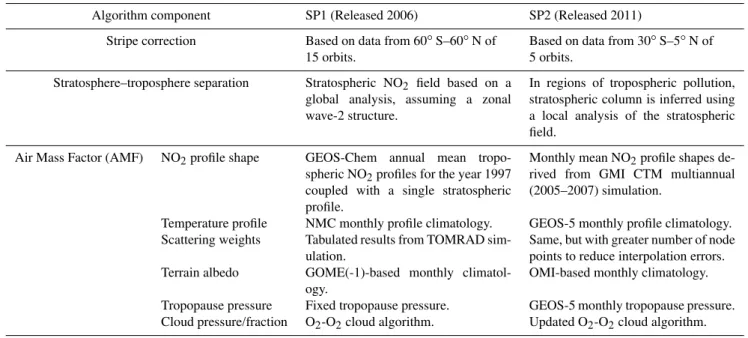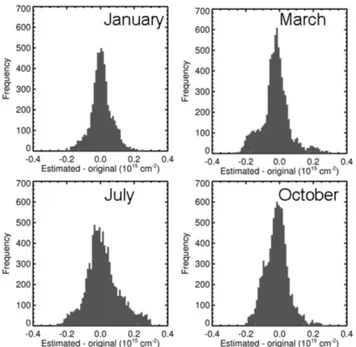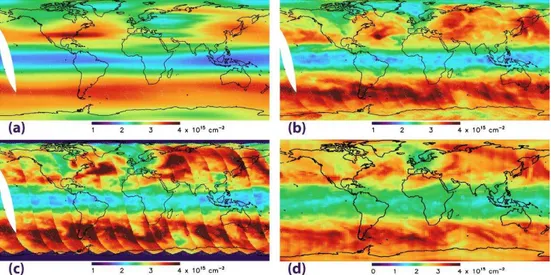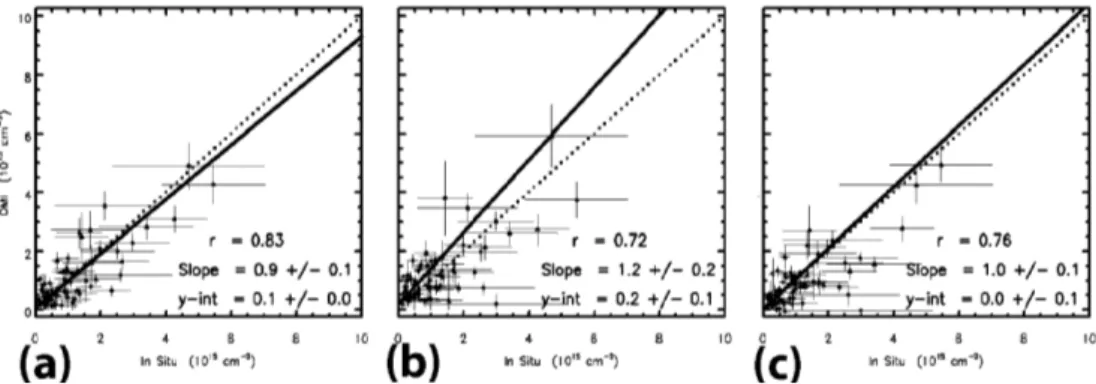A new stratospheric and tropospheric NO<sub>2</sub> retrieval algorithm for nadir-viewing satellite instruments: applications to OMI
Texto
Imagem




Documentos relacionados
To test the impact of the LUTs that are used to derive the effective cloud fraction and effective cloud pressure, we pro- duced datasets using version 2 algorithm with the new and
sensitivity of the retrieval error to the surface pressure error is thus almost twice as large in winter as in summer which is mainly a consequence of the di ff erences in a
The stratospheric vertical columns derived from SCIA- MACHY limb measurements and Oslo CTM2 simulations differ considerably from total vertical columns obtained over the clean
Vertical and slant tropospheric NO 2 -columns from the new satellite instrument SCIA- MACHY on ENVISAT are validated by measurements of the Airborne Multi AXis DOAS
Two different versions of the OMI retrieval algorithm are shown: operational (a, b) , and modified that uses TropO3 clima- tology, linear albedo in UV2 and climatological a
The structure of the remelting zone of the steel C90 steel be- fore conventional tempering consitute cells, dendritic cells, sur- rounded with the cementite, inside of
3.4, the poor correlation between aircraft observations and the BEHR product derived using the stan- dard OMI cloud information is expected to result from arti- facts in the OMI
From previous experiences with satellite occultation instruments, we know that a few particle types are commonly encountered in the measurements: stratospheric aerosols, tropical




